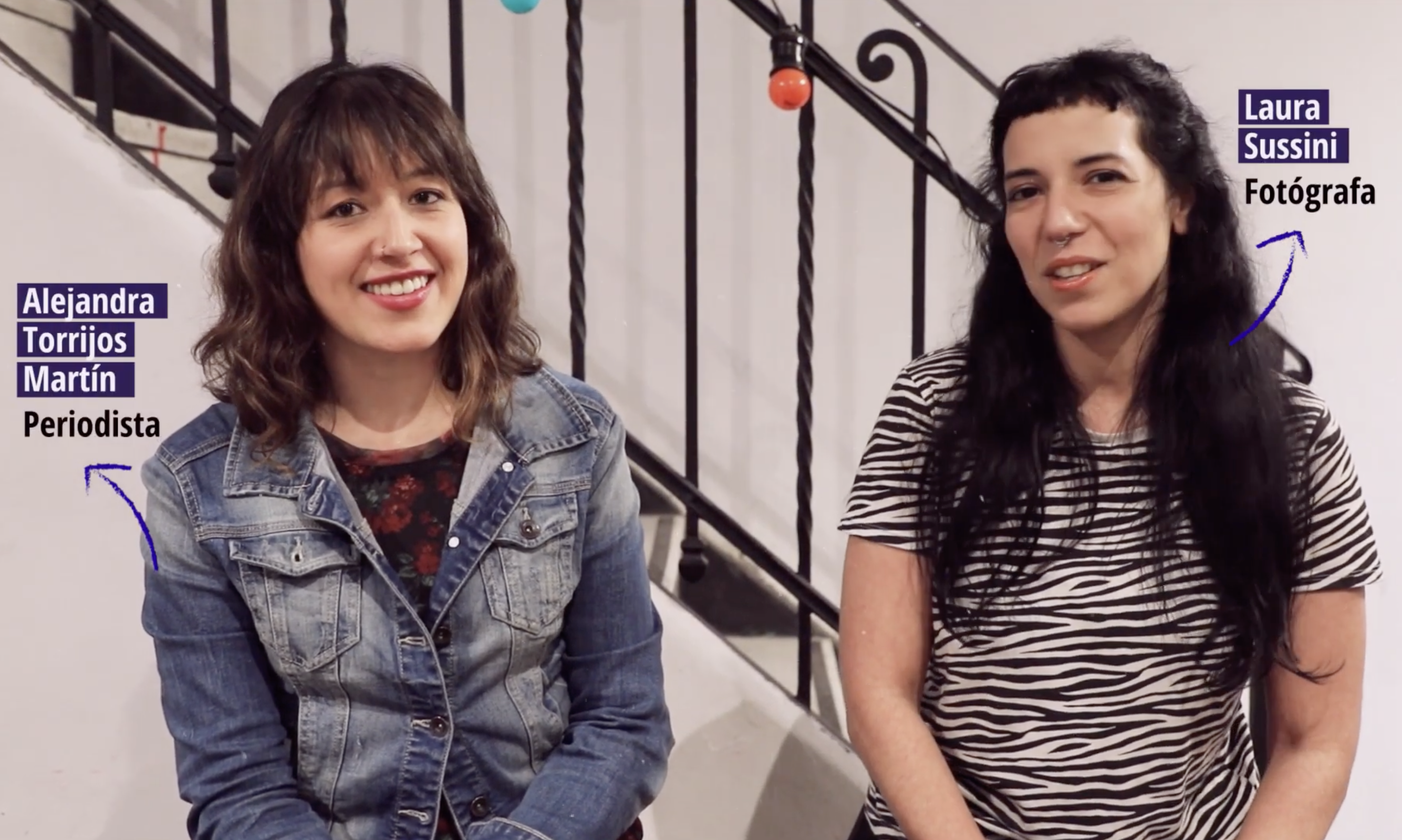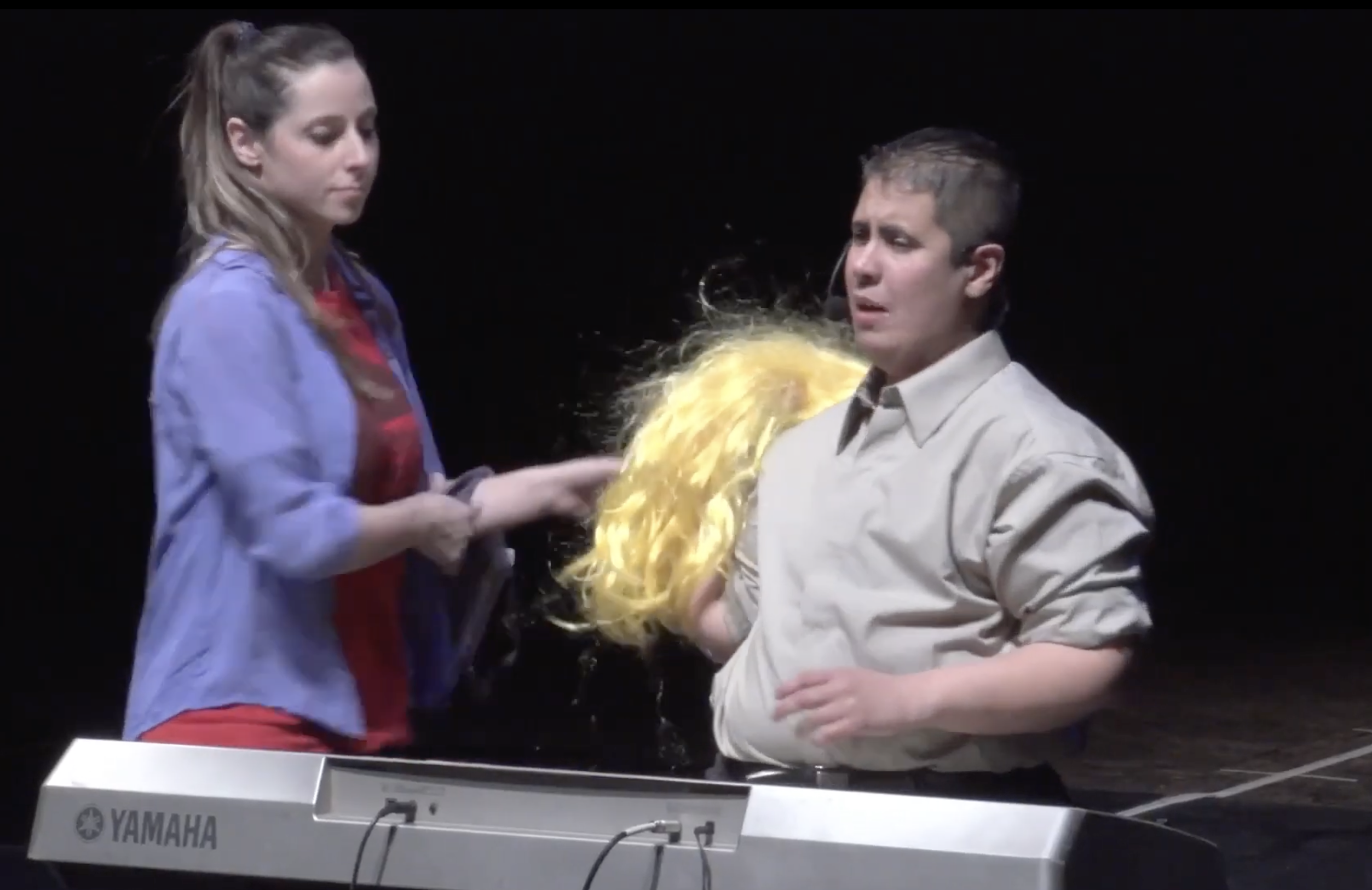Journalist Alejandra Torrijos migrated from her native Colombia to Argentina about a decade ago. Soon after arriving in Buenos Aires, as a way to counteract the uprooting that migration produces, she sought out cultural activities that would take her back to her country. This is how she began to attend salsa parties.
It didn't take her long to realize that salsa and other Afro-Caribbean rhythms that are experienced as an inherent part of the culture in Colombia are experienced as an "almost Hollywood" reinterpretation in Argentina that felt alien to her. However, after a little more searching, Torrijos came across several groups of Colombian, Venezuelan, Peruvian and Cuban migrants who organized salsa parties that were more familiar to her.
After meeting Argentine photographer Laura Sussini at one of these parties, Torrijos thought it might be a good idea to tell the stories of the migrants who attended these events through the way they experience salsa in Buenos Aires. First, they did it from a journalistic approach, through profiles and portraits. But later, that project took the form of a performance, which they titled “Pena y Pachanga.”

"Pena y Pachanga" is a performance featuring stories of migration and melancholic cultural attachment. (Photo: Screenshot from Revista Anfibia's YouTube)
In 2022, the project was further developed during Torrijos and Sussini’s participation in the second edition of the Laboratorio de Periodismo Performático [Performance Journalism Lab]. It’s a project of Revista Anfibia, a digital native site, and Casa Cultural Sofía, a cultural organization based in Buenos Aires, that promotes the crossover between journalistic research and the arts as an innovative way of storytelling. During the Lab, selected participants jointly develop a journalistic investigation and an artistic performance as a way of telling the story.
"Projects arise from pairs working together: an academic, journalist or researcher, and an artist," Julieta Hantouch, director of Casa Sofía and one of the project coordinators, told LatAm Journalism Review (LJR). "The works are developed in a lab where we work from those two disciplines. It’s not a text from which a play is put together. It’s a journalistic investigation in which we go deeper, which goes through a lot of twists and turns, and where we engage with the information at multiple levels."
The idea for the Lab came from Cristian Alarcón, director of Revista Anfibia. For years, in his quest to find new ways of telling stories, he had contemplated exploring the edge between journalism and art, and figuring out how journalism could be conveyed with an artistic perspective. This is how in 2018, together with Casa Sofía, they issued a call for a first edition of the Laboratorio de Periodismo Performático.
"For the Lab, applicants brought different proposals and projects that were worked on, duos between the academic, journalistic world and the arts world working in different disciplines," Hantouch said. “We were working on projects or situations that had to do with a political, social and economic situation, which could be staged or mixed through different variables, with the different arts, from dance, performance, theater, to biodrama and music.”
The Lab entails two months of workshops and tutorials with Alarcón and the playwright Lorena Vega, during which the themes, stories and staging are worked on until arriving at a shared meaning. In the case of "Pena y Pachanga," Torrijos and Sussini staged a salsa party in which the characters tell their stories of migration and their connection to this music.
"We have several people from different disciplines working to make meaning, which is ultimately what we want to achieve," Torrijos told LJR. “We find an issue from a journalistic groundwork, which is part of the reality we want to show.”
Some performance journalism projects that premiered tied to a specific crossroads or moment in time were not shown again. But others, such as "Pena y Pachanga," are updated and adapted as they are produced. Torrijos' piece premiered in April 2022 at a festival to mark the 10th anniversary of Revista Anfibia, and was recently presented on Sept. 17 of this year in Buenos Aires.
"It's like journalism, when there's something going on today that can't stand still," Hantouch said. "Other plays that talk about much more sustainable or universal themes [...] have been restaged several times. In the case of this one ['Fiesta y Pachanga'], which has to do with migration, that's particularly true. It migrates all the time, its content migrates."
Among the topics of other performance pieces derived from the Lab are different styles of maternity, gender transitioning, femicides, big data, discrimination against women in soccer, among others.
Performance journalism is not about putting on a play based on true facts or stage adaptations of journalistic investigations. It has more to do with a journalistic or academic investigation intersecting with an artistic discipline, from which different questions arise that shape a performance narrative pitch, Hantouch said.
"It’s a work that is done jointly with people who come from different disciplines and with advisors, as if they were also curators of each of these specialties, who walk through this process both from [the point of view of] journalism and research, as well as from the artistic side. So that's where this crossover takes place," she said.
Although Torrijos' piece came from a personal story, the journalistic investigation adds a communal sense that is reflected in the performance. People telling similar stories of a cultural and social phenomenon such as migration and the melancholic attachment to their culture.

Journalist Alejandra Torrijos and photographer Laura Sussini were selected for the second edition of the Performance Journalism Lab. (Photo: Screenshot from Revista Anfibia's YouTube)
"That communal sense is achieved with narrative journalism that finds a layer of deep reading," Torrijos said. “That is what Anfibia does with its texts: to be able to have an analysis and a layer of deep sense in the fact. And that fact with a deep sense then finds on stage some tools to talk about what’s there.”
Exploring the edge between journalism and art allows one to take advantage of the emotional component of the latter to appeal to the viewer's emotions, memories and sensations, Hantouch said. For her, the pieces in the Lab have to do with what art incites, and what it and journalism have to contribute to the news or to the current situation.
Performance journalism also makes it possible to extend the reach of journalistic investigations to audiences that would not naturally consume them. Hantouch gave the example of the piece "La revolución y algo rico para el postre [Revolution and something yummy for dessert]," which talks about the bonds between mothers and daughters. It was developed at the Lab by sociologist and care expert Eleonor Faur and her daughter, actress and video art specialist Ana Minujin.
"You can read an [informative] article or you can go see a performance that touches you from a lot of different angles," Hantouch said. “[...] For a super-recognized specialist in care policy research to have the chance to talk about that and say it through a different format, and for her to reach beyond academic people who do research on that, it's definitely a much broader reach.”
Although not all of the Lab's pieces put the journalist-author on stage telling their story, in most cases they always participate in a leading role. This contrasts with what journalists learn in their professional training, that first-person accounts should generally be avoided and that they should never be the protagonist of the story.
However, part of the notion of going beyond the limits of journalism is to explore cases in which the journalist's leading role and first-person storytelling are justified and add to the meaning the author wants to give to his or her piece, according to Torrijos.
"In narrative journalism, first-person accounts are demonized, but if you look at [Peruvian journalist] Gabriela Wiener, [Colombian writer] Margarita García Robayo, there’s another way of doing journalism in the first person that is still journalistic," he said. “As [Argentine journalist] Leila Guerriero also said at some point, if the first person is there, it’s because the story calls for it. I think in this type of journalism, this first-person journalism applies, it becomes necessary.”
Torrijos and Hantouch are aware that, like many innovations in journalism, there is initial resistance, especially when it comes to pitches that are so different from what exists in the traditional journalism industry. However, they believe the Lab's approach responds to audiences’ demand for new formats and the question of where journalism is headed, which has been present throughout the history of Revista Anfibia.
"While [performance] is something that's happening in other areas, like podcasting, it's still something super new and something that's starting to happen," Hantouch said. “It necessarily goes hand-in-hand with the crisis of journalism, of more traditional media, of rethinking traditional formats that are not sustainable.”
To understand performance journalism, according to Torrijos, it helps to think of it as an extension of narrative or long-form journalism, which allows one to find specific scenes, voices and tones as a way of telling a story that is different from an everyday news story.
"[Narrative journalism] is the foundation that allows me to find the tone or the way I want to tell a story. Then there are all these people who have expertise in live storytelling or finding a way to make a scene come alive, who help make sense of it," she said.

"Yo Elijo mi Nombre" is a performance by journalist Ivanna Soto, about the gender transition of blind musician Eric Román Montenegro. (Photo: Screenshot from Revista Anfibia's YouTube)
The Lab is not yet a financially sustainable project, according to Hantouch. So far, it has been possible to produce nine performances in two editions of the project in Argentina thanks to the support of organizations such as the National University of San Martín, the Cronos experimentation lab, the Proa Foundation Art Center, and the art promotion platform La Bienal.
However, the project has attracted attention beyond Argentina's borders and has already had editions in Chile and Colombia.
"Today, it’s not something sustainable in itself, nor does it generate profits. But it’s something that is beginning to be increasingly better received and more in demand also in the same journalistic organizations that seek to finance discussions that have to do with the future and the sustainability of democracy, or with journalistic formats. It’s something that’s also beginning to be noticed," Hantouch said.
The pieces from the first two editions of the Lab continue to be presented at art festivals. This year, in addition to "Pena y Pachanga," "La revolución y algo rico para el postre" and "Yo elijo mi nombre [I choose my name]", the latter by journalist Ivanna Soto, about the gender transition of blind musician Eric Roman Montenegro, have also been shown.
Although there are no plans for a third edition of the Lab, a performance is being prepared for next year that will star Alarcón himself and will have as its starting point a journalistic investigation on testosterone conversion therapies.
"Now we are creating a new work where Cristian Alarcón is the protagonist, and where that which is thought of in more artistic, theatrical, performance terms is absolutely imbued with a journalistic investigation that is happening at the same time in a feedback loop," Hantouch said. "[...] It's not a journalistic investigation that is somehow staged. It's something that arises together and that to me is key."